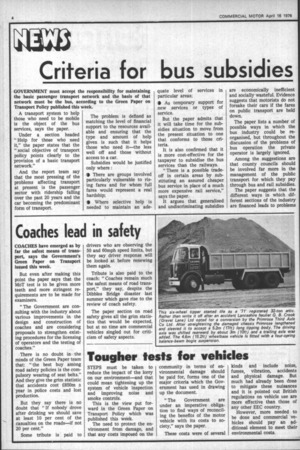Coaches lead in safety
Page 6

If you've noticed an error in this article please click here to report it so we can fix it.
COACHES have emerged as by far the safest means of transport, says the Government's Green Paper on Transport issued this week.
But even after making this point the paper says that the MoT test is to be given more teeth and more stringent requirements are to be made for examiners.
"The Government are consulting with the industry about various improvements in the design and construction of coaches and are considering proposals to strengthen existing procedures for the licensing of operators and the testing of coaches."
There is no doubt in the minds of the Green Paper team that: "the best buy among road safety policies is the compulsory wearing of seat belts." And they give the grim statistic that accidents cost £850m a year in police costs and lost production.
But they say there is no doubt that "if nobody drove after drinking we should save at least 10 per cent of the casualties on the roads—if not 20 per cent."
Some tribute is paid to drivers who are observing the 50 and 60mph speed limits, but they say driver response will be looked at before renewing them again.
Tribute is also paid to the coach: "Coaches remain much the safest means of road transport," they say, despite the Dibbles Bridge disaster last summer which gave rise to the review of coach safety.
The paper section on road safety gives all the grim statistics that would be expected, but at no time are commercial vehicles singled out for criticism of safety aspects.




























































































